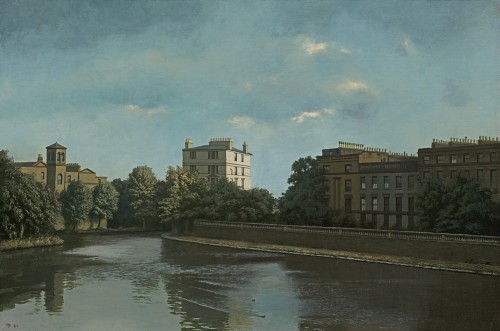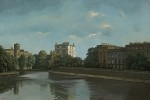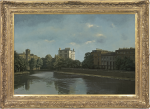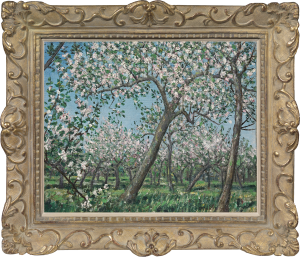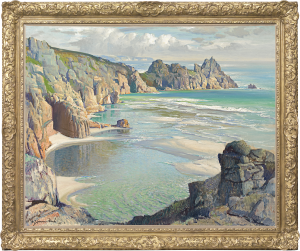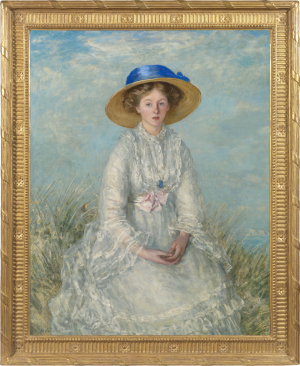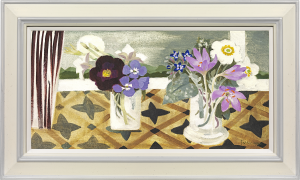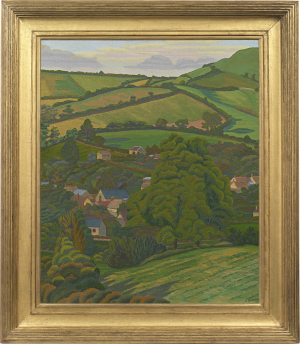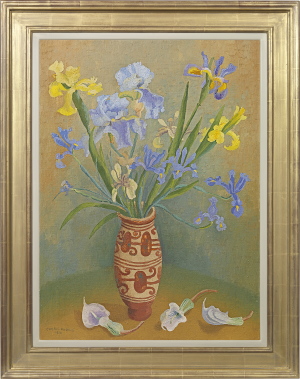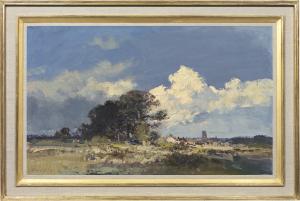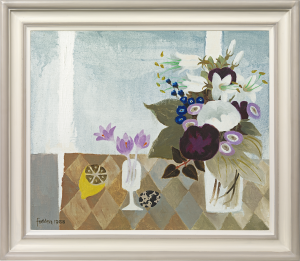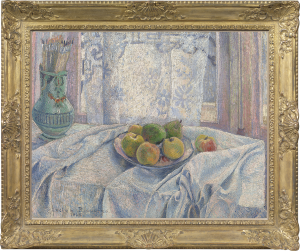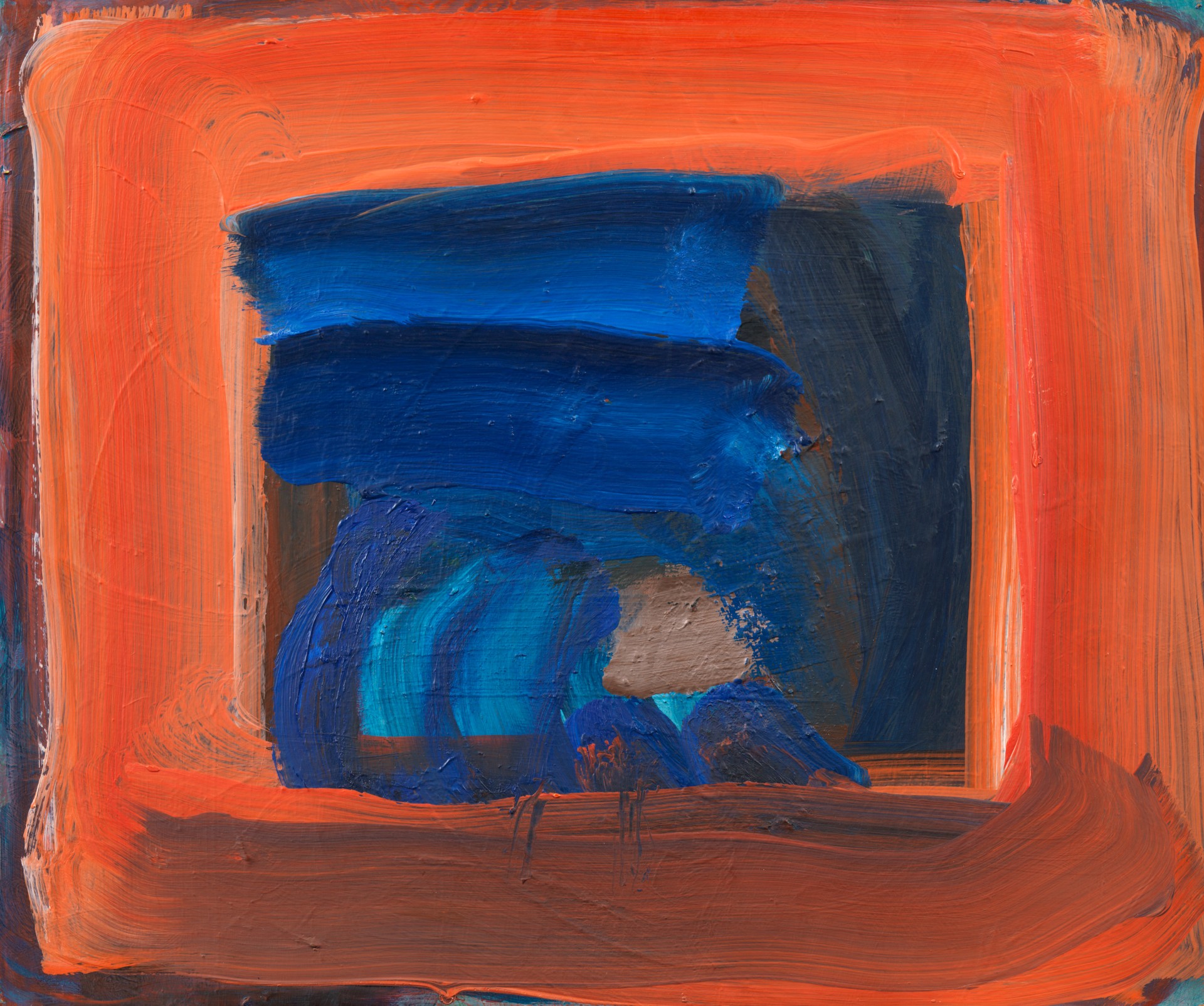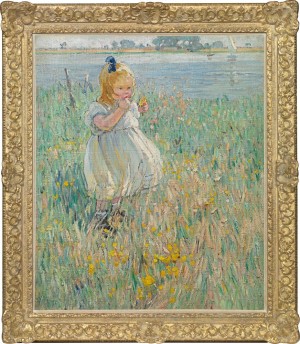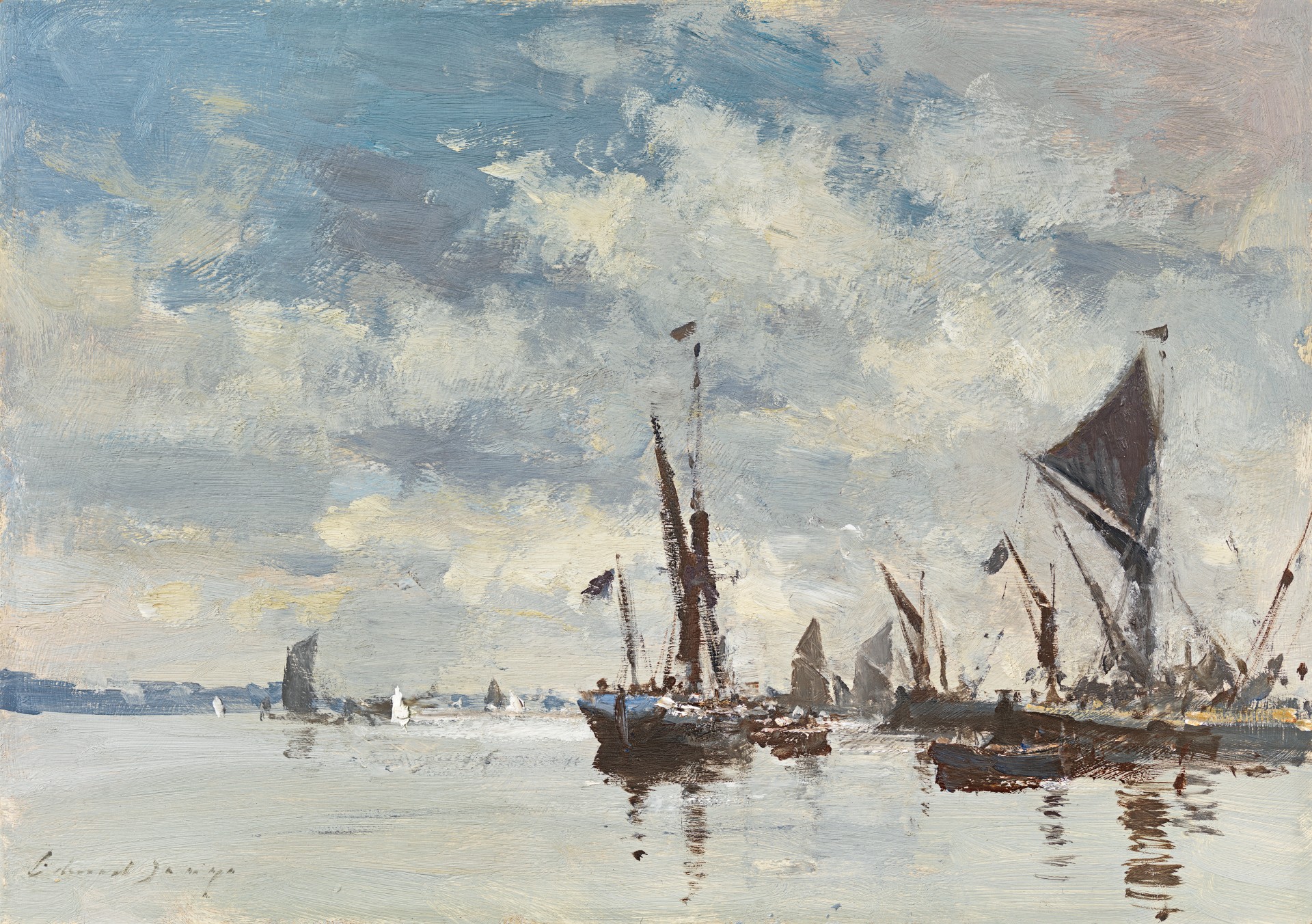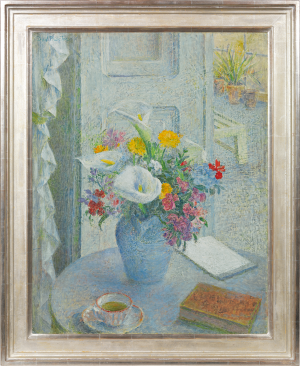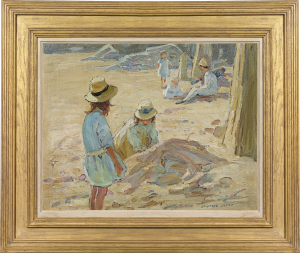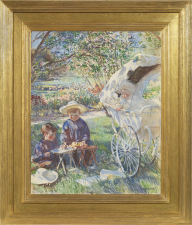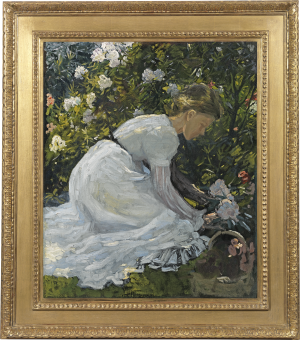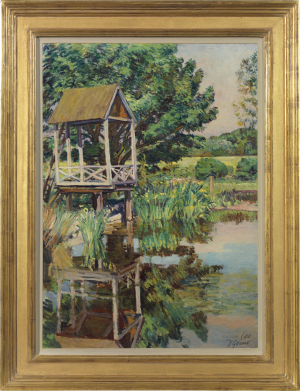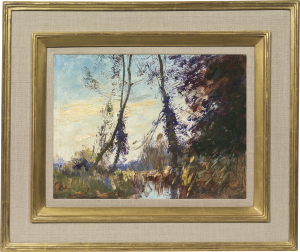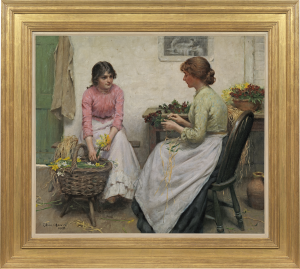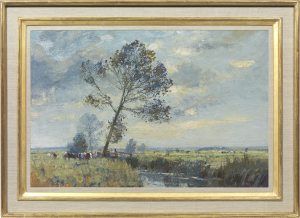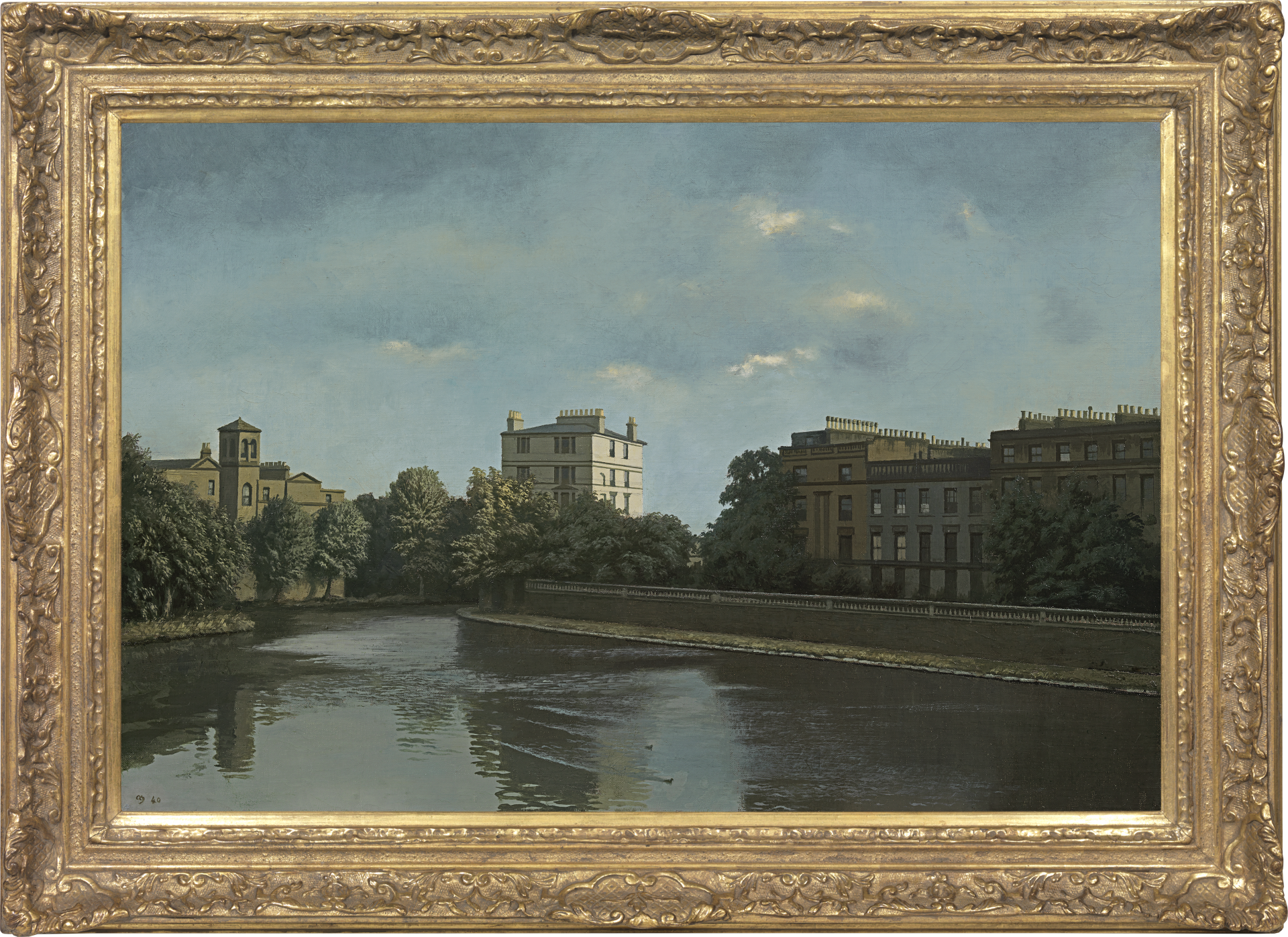Algernon Newton
Regent's Canal, Paddington
Oil on canvas: 20 x 30 (in) / 50.8 x 76.2 (cm)
Signed with monogram and dated lower left: 40; inscribed with the title and signed on the overlap: REGENT’S CANAL, PADDINGTON ALGERNON NEWTON A.R.A.
This artwork is for sale.
Please contact us on: +44 (0)20 7493 3939.
Email us
ALGERNON NEWTON
1880 - London - 1968
Ref: BZ 142
Regent's Canal, Paddington
Signed with monogram and dated lower left: AN 40; inscribed with the title and signed on the overlap: REGENT’S CANAL, PADDINGTON ALGERNON NEWTON A.R.A.
Oil on canvas: 20 x 30 in / 50.8 x 76.2 cm
Frame Size: 26½ x 36½ in / 67.3 x 92.7 cm
Provenance:
Leicester Galleries, London;
Sir Robert McLean (1884-1964),[1] acquired from the above in June 1941, then by descent to
Annie Penrose (1911-2011, nee McLean), Killiow, Truro, then by descent
David Lay, Penzance, 15th January 2009, lot 211
Abbott & Holder, London
Exhibited:
London, Leicester Galleries, Paintings by Algernon Newton ARA, June-July 1941, no.34
Literature:
Recorded in the Artist’s photo album, dated 1941, Tate Archive
Algernon Newton painted his first Regent’s Canal in 1922 and went on to paint a number of canal views, including The Regent’s Park Canal, Paddington, 1930, in the collection of the Royal Academy of Arts, London, and became known to his contemporaries as “the Regent’s Canaletto.” Newton returned to the subject in 1940, perhaps inspired by the exhibition of his early pen and wash drawing, Canal, near Paddington, November 1923, at the National Gallery Exhibition of 20th Century British Paintings, held earlier that year.
Newton undertook a detailed study of the exquisite tonal relationships achieved by the great Venetian painter Canaletto: “I had never before seen such accurate and sensitive values in any other master concerned with the rendering of light in landscape”.[2] Their secret, he felt, lay in the dual tints of the underpainting, observed from nature: “The cool grey shadows and warm golden lights, no wonder the street glowed with golden sunlight, no wonder Canaletto’s canal scenes shimmered in the sun’s rays: were they both not painted with the same brush dipped in truth?”[3] Gradually Newton developed his strikingly original technique based on his studies of the old master, as Nicholas Usherwood describes: ‘This method consisted firstly of an underpainting, or duochrome base as he called it, of cork black and cyanine blue for the cool, shadowed areas, and raw sienna and raw umber for the warm, sunlit areas. Local colour was then laid in over this, in a series of thin paintings and glazes, the pure glaze using the pure colour, without any white added, and thinned with enough linseed oil to allow it to be easily “washed” on with flat sable brushes – a process not unlike watercolour painting and giving him, as he himself put it, a similar luminosity and transparency but without losing the solidity and strength of oil painting.’[4]
Canaletto also inspired Newton’s urban subject, the city, though it was the everyday architecture and deserted waterways of Camden and Kentish Town that stirred his unique imagination: “When I first came (back) to London from Cornwall, I could not see anything I wanted to paint but after a few weeks of wandering about the streets in all parts of London, I came to the conclusion that there was much worth painting and that London held a very individual beauty of its own, a beauty that was London. There always seemed to be a warm haze enveloping everything including the sky and the clouds floating behind the roofs and chimney pots looked even more majestic than they had appeared in Cornwall. I was chiefly attracted to the poorer districts and the slums. They seemed to me so much more beautiful that the West End of London, there was more of the individual character of London there, far more mental atmosphere and a certain sadness made up of human associations hung over the sordid streets and backwaters of London…I liked walking along the towing path of the Regent’s Canal and seeing London as it were from the wings in a theatre. Walking along the towing path one seemed to lose all sense of locality, there was nothing to indicate the district one was passing through. Occasionally a cream coloured Regency house would cast its trembling reflection into the dark water of the canal.’[5]
We are grateful to Nicholas Newton, the artist’s grandson and Sir Mark Jones, for their assistance with the cataloguing of this work.
The Regent’s Park Canal, Paddington, 1930
Oil on canvas: 182.8 x 274.6 cm
Royal Academy of Arts, London
ALGERNON NEWTON RA
1880 – London – 1968
Born 23rd February 1880 in Hampstead, Algernon Newton was the fourth son of Arthur Henry Newton, Managing director of Winsor & Newton Limited, and Georgiana Tregonning Newton (née Nicholls), whose family lived at Hayle in Cornwall and owned Wheal Alfred Mine. Newton was the grandson of the artist and businessman, Henry Charles Newton, one of the founders of Winsor & Newton, the celebrated firm of artists’ materials.
From the age of nine, Newton had a very unhappy time at Farnborough School before receiving private tuition to enter Clare College, Cambridge in 1899. He left without a degree the following year to train at Frank Calderon’s School of Animal Painting in London. As early as 1903, Newton had his painting, The Arab ‘Rebab’, accepted and hung “on the line” at the Royal Academy Summer Exhibition. After three years at Calderon’s School, Newton took classes at the Slade School of Art c. 1903-4 before continuing his studies at the London School of Art in Kensington c. 1906-7.
The artist married Marjorie Rider in 1903, with whom he had four children. After living in Dorset, the family moved frequently with brief periods in Buckinghamshire, Switzerland and British Columbia before Newton joined the Royal 1st Devon Yeomanry in 1916. Later that year he was invalided out of the army, having suffered double pneumonia and returned to his family in Cornwall, where he had built a house, Bodriggy, in Lamorna where they were living amongst the community of artists who had settled there which included Laura and Harold Knight, Alfred Munnings and Lamorna Birch. His horror of war and his strong pacifist feelings influenced his work throughout his life. In 1918 the family moved to Theale, Berkshire, before Newton left home to make a new life in London with Emily Richards (known as Janetta), who would become his second wife following his divorce in 1921.
Following his early success at the Royal Academy of 1903, Newton exhibited there regularly from 1924. He was elected an Associate RA in 1936 and a full member in 1943. A retrospective of his work was held at the Royal Academy in 1980. Newton’s first one-man show was held at the Eldar Gallery in 1920, though he went on to exhibit with the Leicester Galleries in 1931, 1933 and 1951.
The work of Algernon Newton is represented in the public collections of City of Birmingham Art Gallery; Brighton Corporation Art Gallery; Bristol Museum & Art Gallery; Buxton Museum & Art Gallery; Claire College, University of Cambridge; Beecroft Art Gallery, Essex; Glasgow Museums Resource Centre; Ferens Art Gallery, Hull; Leamington Spa Art Gallery & Museum Walker Art Gallery, Liverpool; the Royal Academy of Arts, Tate Britain, the Victoria & Albert Museum and the Government Art Collection, London; Nottingham Castle Museum and Art Gallery; Buxton Art Gallery; Lady Lever Art Gallery; Harris Museum & Art Gallery, Preston; Touchstones, Rochdale; Pannett Art Gallery, Whitby; National Trust, Wimpole Hall and Anglesey Abbey; National Gallery of Victoria; National Gallery of New South Wales, Sydney; Tatham Art Gallery, Pietermaritzburg Art Gallery; Minneapolis Institute of Art and The Metropolitan Museum of Art, New York.
[1] Sir Robert McLean (1884-1964) was general manager of the Great Peninsular Railway Company and then Managing Director and Chairman of Vickers. He named the Spitfire after his daughter Annie who married Algernon Newton’s son Robert Newton on Christmas Eve 1936. Robert Newton’s sister Joy was married to Beakus Penrose, brother of Roland Penrose. Beakus divorced Joy and married Annie, thenceforth Annie Penrose (1911-2011), who inherited this painting from her father.
[2] The artist, cited in ibid.
[3] The artist, cited in ibid.
[4] Nicholas Usherwood, ‘Algernon Newton: An Introduction’, Algernon Newton RA 1880-1968, exh cat, Graves Art Gallery, Sheffield, 1980, (npn)
[5] The artist cited in The Peculiarity of Algernon Newton, A Graham-Dixon, exh cat, Daniel Katz Gallery, 2012, p. 8.

